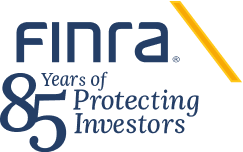Summary
FINRA is requesting comment on potential enhancements to its short sale reporting program. FINRA is considering: (1) modifications to its short interest reporting requirements (Rule 4560); (2) a new rule to require that participants of a registered clearing agency report to FINRA information on allocations to correspondent firms of fail-to-deliver positions; and (3) other
FINRA Requests Comment on Proposed Amendments to FINRA Rule 4210 for Transactions in the TBA Market
(a) Notice of Requirements and/or Restrictions; FINRA Action
FINRA staff may issue a notice directing a member to comply with the provisions of Rule 4110, 4120 or 4130 or restrict its business activities, either by limiting or ceasing to conduct those activities consistent with Rule 4110, 4120 or 4130, if FINRA staff has reason to believe that a condition specified in Rule 4110, 4120 or
Summary
FINRA is updating the text of the Securities Exchange Act (SEA) financial responsibility rules in the Interpretations of Financial and Operational Rules to reflect the effectiveness of a rule change that the Securities and Exchange Commission (SEC) adopted.1 The SEC’s rule change, amending paragraph (e)(1)(i)(A) of SEA Rule 17a-5, relates to a specified exemption with regard to the
FINRA Announces Updates of the Interpretations of Financial and Operational Rules
Summary
The SEC has issued an Order1 that permits specified FINRA members an additional 30 calendar days for filing their annual reports as required pursuant to SEA Rule 17a-5(d), subject to certain conditions. The SEC’s Order is in response to a request by FINRA that is designed to ease potential burdens that smaller members may face in obtaining audit services. Members that meet the
Most transfers of customer accounts from one brokerage firm (the "carrying firm") to another (the "receiving firm") occur through the Automated Customer Account Transfer Service (ACATS), an electronic transfer system developed by the National Securities Clearing Corporation (NSCC) to automate and standardize the transfer of accounts. When it is not possible to use ACATS,
SEC Approves Consolidated FINRA Rules Governing Financial Responsibility
Proposed Consolidated FINRA Rules Governing Financial Responsibility; Comment Period Expires: June 13, 2008
The SEC requires that broker-dealers create and maintain certain records so that, among other things, the SEC, self-regulatory organizations ("SROs") and state securities regulators may conduct effective examinations of broker-dealers.
